How To Grow And Harvest Spinach: This Crop Can Provide A Yield All Year Round

VEGETABLES > SPINACH

Elizabeth is a Permaculture Garden Designer, Sustainability Consultant and Professional Writer, working as an advocate for positive change. She graduated from the University of St. Andrews with an MA in English and Philosophy and obtained a Diploma in Applied Permaculture Design from the Permaculture Association.
Reviewed By DAN ORI

Dan has over 27 years’ under his belt caring for plants and gardens. Working as a Horticultural Instructor and Consultant, he draws on a diverse range of experience that includes working as a Head Gardener, Tree Surgeon, Garden Centre Trouble Shooter, and writer of academic papers. Dan has a Level 3 Diploma in Horticulture and is currently a candidate for the RHS’s most prestigious award – The Master of Horticulture.
IN THIS GUIDE
SPINACH GUIDES
Spinach is a core crop to include in your vegetable garden, whether you only have a small container garden, or extensive kitchen garden beds.
It can be eaten raw in salads, as a steamed green, or in a range of other dishes – you can even consider adding it to your fruit smoothies and juices.
Read on to learn more about this useful green vegetable, and how to grow and care for this crop in your vegetable garden.
Overview
| Botanical Name | Spinacia oleracea / Beta vulgaris subsp. vulgaris |
| Common Name(s) | Spinach |
| Plant Type | Vegetable |
| Native Area | Central & West Asia |
| Hardiness Rating | H4 |
| Foliage | Can overwinter with protection |
| When To Sow | March, April, May, August, September |
| Harvesting Months | Year-Round |
Sunlight
Preferred
Partial Shade
Exposure
Exposed or Sheltered
Size
Height
0.1 – 0.5M
Spread
0.1 – 0.5M
Soil
Preferred
Most Soil Types
Moisture
Moisture retentive
pH
Any
First of all, it is important to understand that there are a couple of different plants which are referred to as spinach.
‘True Spinach’ Vs ‘Perpetual Spinach’
The first is ‘true spinach’ – Spinacia oleracea – and the second is ‘perpetual spinach’ – Beta vulgaris subsp. cicla var. cicla.
This is technically a chard, though it tastes very similar to a true spinach.
Both can be excellent choices for your garden – but it is important to understand that they have somewhat different needs and requirements.
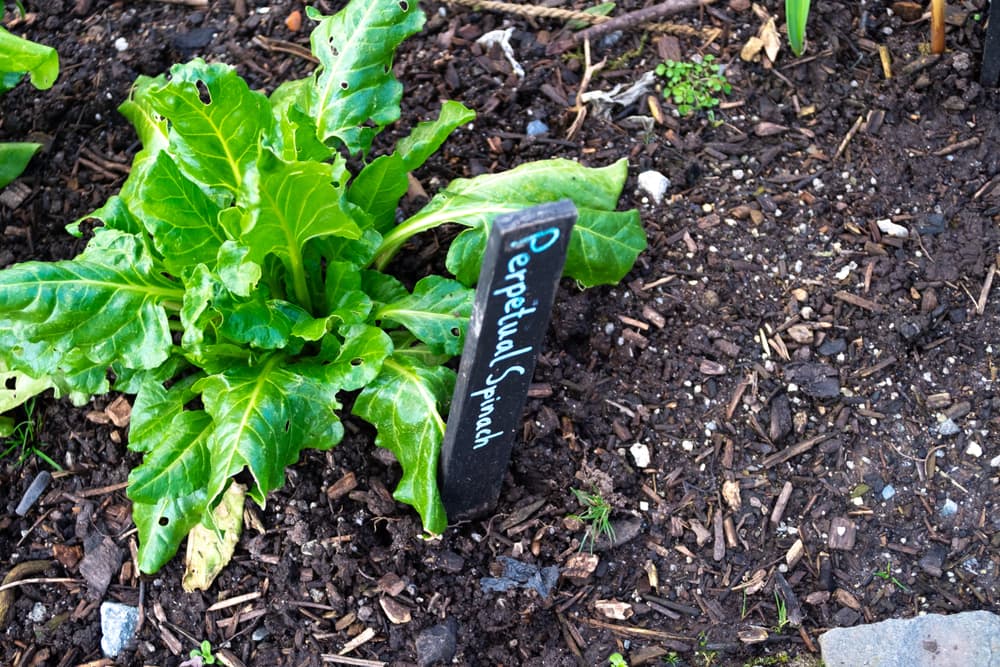
True spinach is now known only in cultivation, but is believed to have originated in central and western Asia.
Chard of the leafy spinach type is in the Cicla cultivation group, though within the same species as the Flavescens Group which includes stalk types of chard – like Swiss chard.1Chard. (n.d.). Wild Flower Finder. Retrieved March 24, 2023, from https://wildflowerfinder.org.uk/Flowers/C/Chard/Chard.htm
True spinach is usually annual, while perpetual spinach is usually biennial; it also has summer varieties and winter varieties.2Spinach. (n.d.). Agriculture and Food Development Authority. Retrieved March 24, 2023, from https://www.teagasc.ie/crops/horticulture/vegetables/spinach-perpetual—veg-guide/
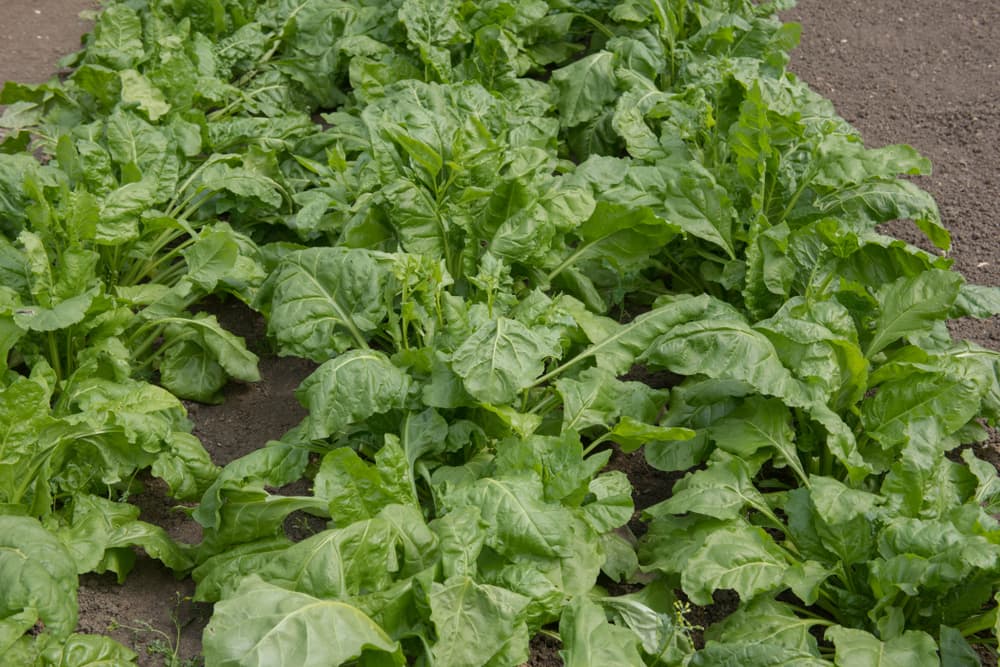
Spinach is a crop which can be enjoyed year-round – but you do have to choose the right varieties/cultivars and sow and plant them at the right times.
Perpetual spinach is typically a little easier to grow, and is highly recommended if you are interested in harvesting spinach from your garden practically all year round.
Why Grow Spinach?

Spinach – both true spinach and perpetual spinach have a great flavour.
They are both great leafy vegetables to grow.
This is a crop that can provide you with a yield all year round, and it is pretty easy to grow.
To maximise yield from your garden, I would highly recommend that you consider growing both.
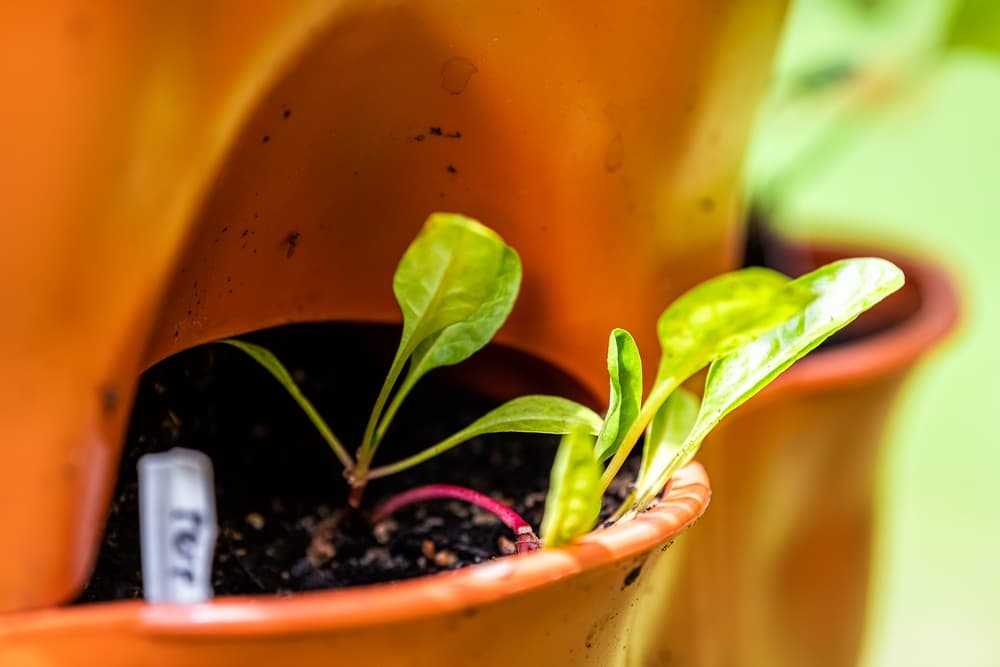
Though if you have space only for one, then perpetual spinach will usually offer the best yields for the time and effort you expend.
This is also the better choice, often, for less experienced gardeners.
Spinach can be a great addition to polyculture planting schemes – it can work well to provide ground cover between taller growing crops, or to make the most of the space between slower growing crops.
Common Varieties
When choosing spinach, you will of course first have to decide whether you will grow true spinach, or perpetual spinach (or both).

For true spinach, some good varieties include:
- ‘Amazon’ – Sow in spring or autumn for overwintering.
- ‘Apollo’ – Sow outdoors March-August.
- ‘Matador’ – Sow in spring or autumn.
- ‘Medania’ – Again, can be sown in spring or autumn (with protection)
- ‘Missouri’ – Slow to bolt, good for spring sowing.
- ‘Red Kitten’ – Sow spring or early autumn (with protection). Red-veined F1 spinach.
- ‘Securo’ – spring sowing, potentially also August/September.
- ‘Winter Giant’ – for August/September sowing, for overwintering.
There are also named varietals of perpetual spinach, including:
- ‘Erbette’
- ‘Everglade’
Make sure that you choose varieties which are suitable for the time of year when you plan to sow.
True spinach of F1/hybrid types can be more bolt-resistant – but choose heritage crops if you want to save your own seeds.
Note that if you plan on saving seeds, perpetual spinach will cross readily with beetroots and chards.

Perpetual spinach is biennial and usually flowers in its second year.
If you want a variety to stay true to type you will need to isolate it with a physical covering.
If you are interested in leafy greens, one other thing to note is that spinach is not your only option.
Other interesting leaf vegetables that are similar to spinach but which you may not have considered include:
- Amaranths
- Belleville sorrel
- Fat hen / Goosefoot (Chenopodium)
- Orach
- Vegetable mallow (Malva crispa)
And of course, related to perpetual spinach, there are plenty of other interesting chards to choose from to add variety to your garden and enjoy a range of crops for salads and cooked greens.

Where To Grow Spinach
Spinach can be grown in containers, in raised beds, or in the ground.

It is a flexible plant that can work well in a range of situations as long as its fertility and water needs are met.
If soil conditions are poor, be sure to amend the area before planting by topdressing with a good-quality organic mulch of homemade compost or well-rotted manure.
Summer spinach will do best when grown in a partially shaded spot.
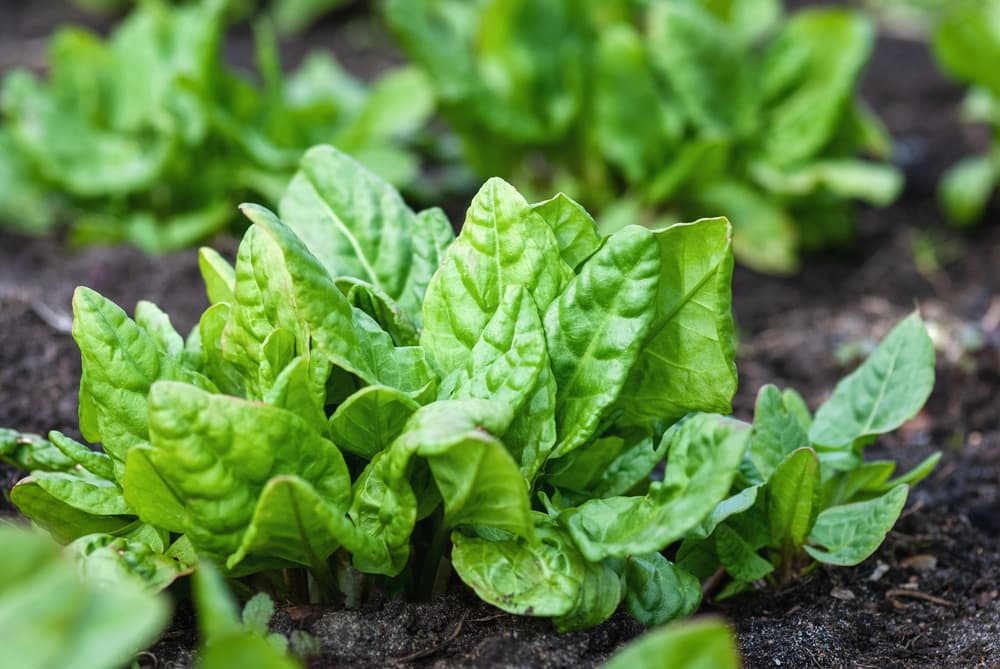
This can help to avoid the problem with ‘bolting’ – plants running prematurely to seed.
However, spinach sown later in the year will do best in full sun conditions.
Spinach and other leafy greens are ideal for growing in vertical gardens, planting towers, and other small space gardening solutions.

One other interesting thing to note is that spinach is a leafy crop that can also do well when grown not in soil or growing medium, but in water.
Spinach is one of the crops that you can consider growing in a number of different hydroponic or aquaponic water-based growing systems.
Companion Planting
When deciding where to grow spinach, you should think not only about the plant itself, its needs and local conditions.
You should also be sure to think about the neighbours in the growing area.
Companion planting can help you make the most of your garden space, and it can help you succeed in your spinach growing.
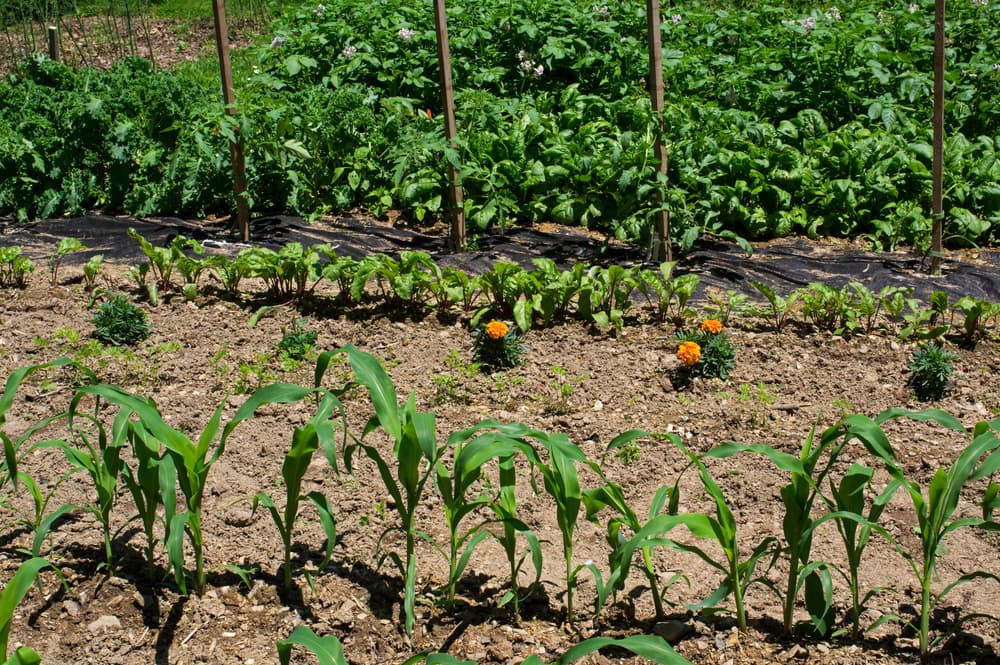
The ‘Great GROW Experiment’ in 2018 was a citizen science project which investigated the benefits of growing climbing beans, spinach and radishes in polycultures together.
70% of the participants found that, overall, polycultures were significantly more productive.3The Great Grow Experiment. (n.d.). Permaculture. Retrieved March 24, 2023, from https://www.permaculture.org.uk/research/great-grow-experiment
Largely, the beans were more productive for being grown with the spinach and radishes, but spinach and radishes also had slightly higher yields.
Many other gardeners have reported success with growing spinach alongside other crops.
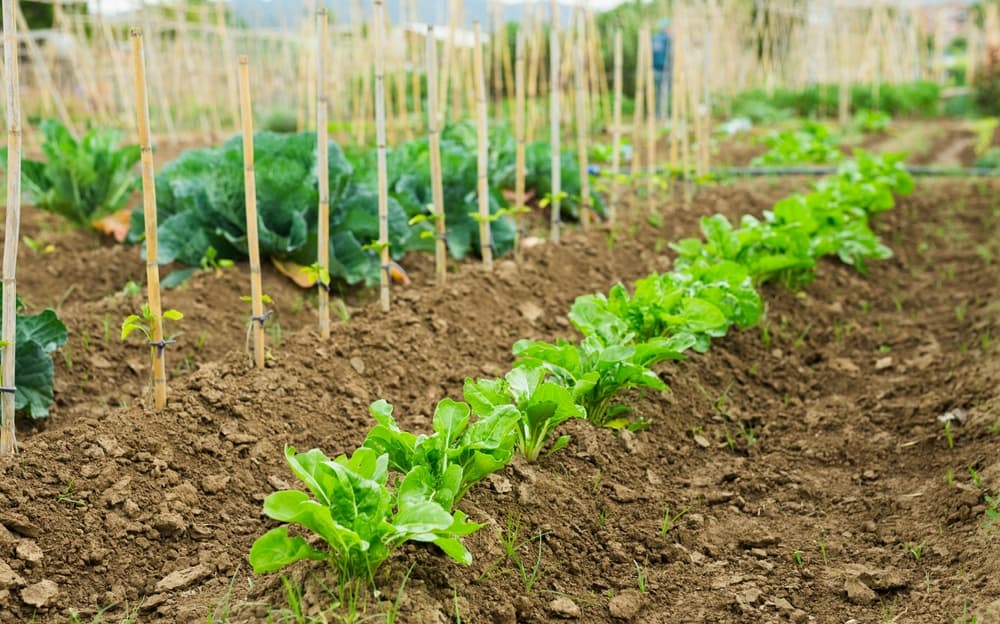
Spinach is often grown intercropped with slower-growing Brassicas (members of the cabbage family) to make the most of the space.
That includes plants like kale, broccoli, cabbages, cauliflower and kohlrabi.
Radishes are another quick-growing crop that can work well alongside spinach, as can a variety of lettuce crops.
Lettuce, radishes and spring onions are all quick and small space requirement crops that can work well alongside spinach in smaller beds or planters, or a container garden.
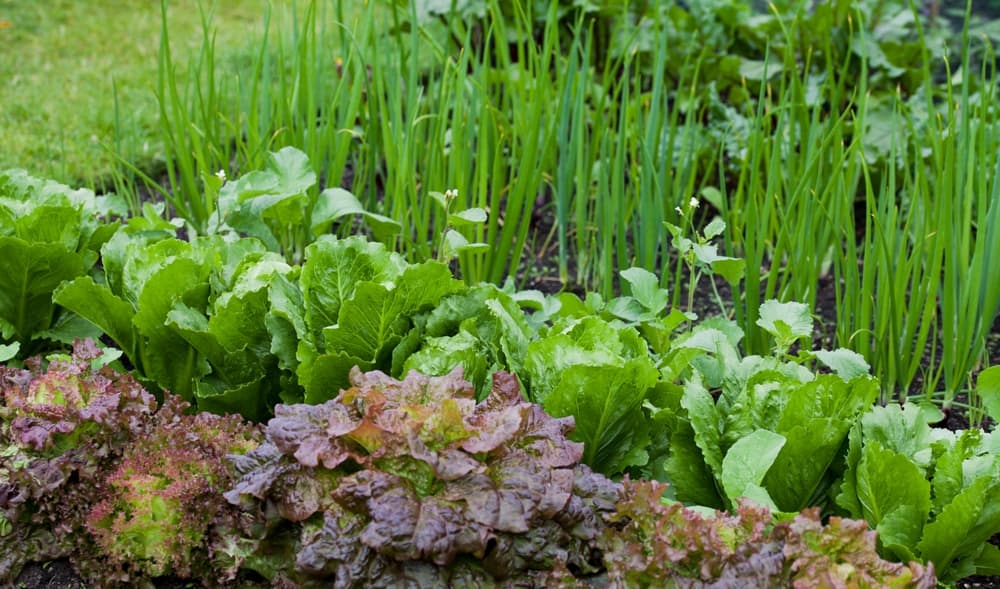
Summer spinach will benefit from being grown under/between peas or beans.
These crops fix nitrogen, and will also provide shade to prevent bolting in summer crops.4Nitrogen Fixing Bacteria – Rhizobia. (n.d.). Tropical Permaculture. Retrieved March 24, 2023, from https://www.tropicalpermaculture.com/nitrogen-fixing-bacteria.html
Tomatoes can also be useful in providing shade for summer spinach, while the spinach can improve ground cover below tomatoes and reduce moisture losses.
It is also said to grow well alongside celery, and alliums (members of the onion family, as well as alongside strawberries.
It is said that spinach should not, however, be grown alongside grapes, or hyssop.
Spinach Plant Care
Caring for true summer spinach means making sure that there is good fertility in the growing area (low fertility may cause bitterness in the leaves) and that the growing area remains consistently moist.
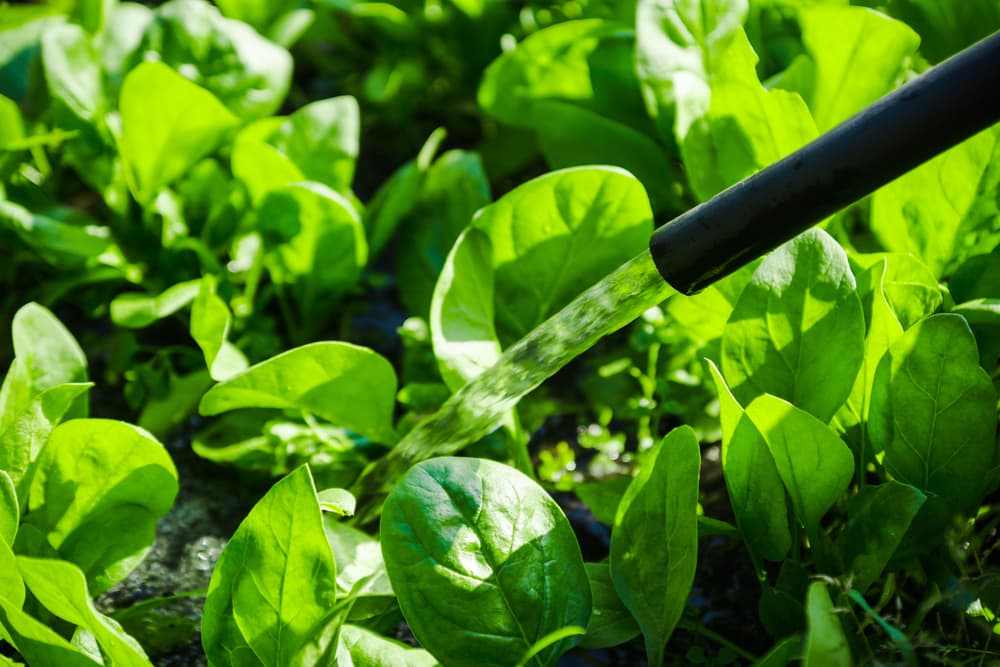
Maintaining water means keeping up watering during dry periods.
It also means mulching around the crops with nitrogen-rich organic matter, and providing shade, which can also help to prevent bolting.
Caring for later sown true spinach and perpetual spinach crops involves making sure your plants are protected from frost – either in an undercover growing area (greenhouse/ polytunnel) or under cloches, straw mulch etc. from October onwards.
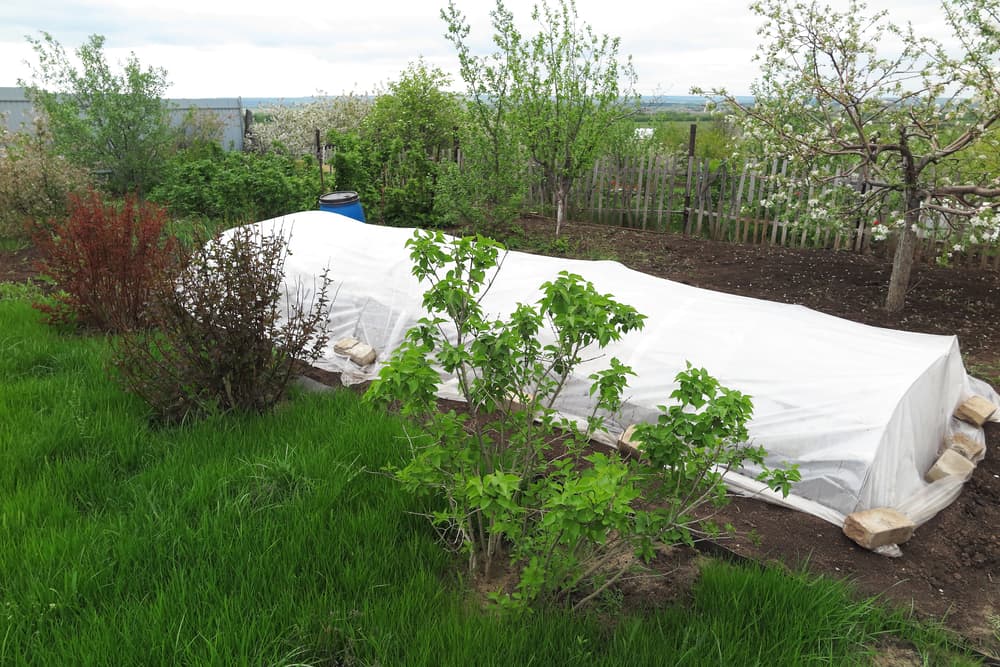
All spinach can be susceptible to birds, which may eat your crop.
Where this is an issue, use a physical cover to protect your plants.
To reduce the chances of spinach downy mildew in mild and humid weather, ensure good ventilation at all times and avoid overcrowding.
Harvesting
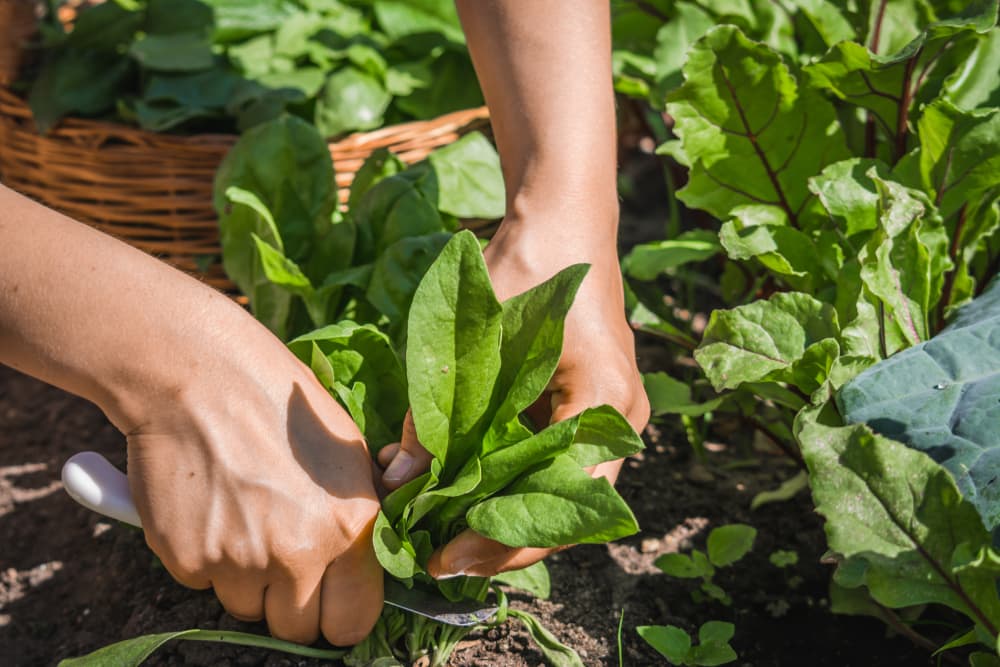
One of the great things about spinach is that you can begin to harvest baby leaves after as little as 6 weeks or so.
You can harvest the leaves continually as and when you need them as soon as they are large enough to pick.
Spring sown true spinach can be picked from May right through (providing they have not bolted) to October.

While winter true spinach cultivars can be picked (though a little less prolifically) throughout the rest of the year.
Perpetual spinach can be harvested and enjoyed all year round.
“To harvest, cut leaves close to the base using scissors,” says Master Horticulturist Dan Ori.
“You should find that early harvested leaves should come again for harvesting after 6 weeks.
“I like to harvest from the outside into the centre to get the most out of each plant.
“Spinach starts wilting almost instantly after being harvested and does not last long on the plant once matured, so I advise cutting when you are ready to use them straight away.”
References
- 1Chard. (n.d.). Wild Flower Finder. Retrieved March 24, 2023, from https://wildflowerfinder.org.uk/Flowers/C/Chard/Chard.htm
- 2Spinach. (n.d.). Agriculture and Food Development Authority. Retrieved March 24, 2023, from https://www.teagasc.ie/crops/horticulture/vegetables/spinach-perpetual—veg-guide/
- 3The Great Grow Experiment. (n.d.). Permaculture. Retrieved March 24, 2023, from https://www.permaculture.org.uk/research/great-grow-experiment
- 4Nitrogen Fixing Bacteria – Rhizobia. (n.d.). Tropical Permaculture. Retrieved March 24, 2023, from https://www.tropicalpermaculture.com/nitrogen-fixing-bacteria.html
